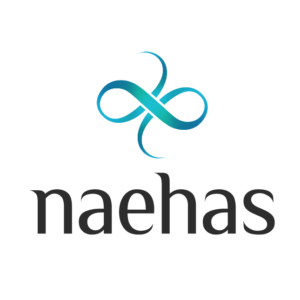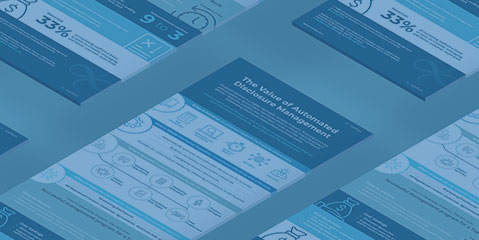The Federal Open Market Committee (FOMC), the policy-making arm of the Federal Reserve, announced at the conclusion of its July meeting, that it will increase interest rates by .75 percentage point for a second time to fight inflation. A statement issued July 27 by FOMC members, led by Federal Reserve Chairman Jerome Powell, offered the following:
“Recent indicators of spending and production have softened. Nonetheless, job gains have been robust in recent months, and the unemployment rate has remained low. Inflation remains elevated, reflecting supply and demand imbalances related to the pandemic, higher food and energy prices, and broader price pressures.
Russia’s war against Ukraine is causing tremendous human and economic hardship. The war and related events are creating additional upward pressure on inflation and are weighing on global economic activity. The Committee is highly attentive to inflation risks.
The Committee seeks to achieve maximum employment and inflation at the rate of 2 percent over the longer run. In support of these goals, the Committee decided to raise the target range for the federal funds rate to 2-1/4 to 2-1/2 percent and anticipates that ongoing increases in the target range will be appropriate. In addition, the Committee will continue reducing its holdings of Treasury securities and agency debt and agency mortgage-backed securities, as described in the Plans for Reducing the Size of the Federal Reserve’s Balance Sheet that were issued in May. The Committee is strongly committed to returning inflation to its 2 percent objective.
In assessing the appropriate stance of monetary policy, the Committee will continue to monitor the implications of incoming information for the economic outlook. The Committee would be prepared to adjust the stance of monetary policy as appropriate if risks emerge that could impede the attainment of the Committee’s goals. The Committee’s assessments will take into account a wide range of information, including readings on public health, labor market conditions, inflation pressures and inflation expectations, and financial and international developments.”
Leveraging innovation in a volatile market: How Automation Reduces Risk
This newest rate increase comes ahead of additional economic news, bringing challenges to banks and financial service firms already challenged with multiple rate changes this year. Planning for a certain amount of uncertainty, while focusing on reducing risk, is requiring bank leaders and their marketing and product teams to consider better, more efficient processes for disclosure compliance and regulated content review of customer outreach communications.

Automation is playing an important role for banks, regardless of rate increases and market reports amidst a dynamic and largely unpredictable set of conditions. As the industry watches for new reports and news, finserv institutions that lean into innovation and automation will be best positioned to improve their disclosures andreduce risk – key goals for any bank, any time.
The Consumer Price Index Summary for June, 2022, from the U.S. Bureau of Labor Statistics, was one of several key economic indicators which prompted the Federal Reserve to take more drastic measures than the market had initially anticipated at its June 15 meeting. At that time, it lifted interest rates by 0.75 percentage point, the third hike this year and the largest since 1994. The move was aimed at countering the fastest pace of inflation in over 40 years.
A plethora of additional economic reports, and additional FOMC meetings remain through 2022.
The Consumer Price Index for July 2022 is scheduled to be released on Wednesday, August 10, 2022. The next meeting of the FOMC is September 20-21, which is associated with a Summary of Economic Projections. From there, FOMC will hold two more meetings, November 1-2, and December 13-14, 2022, the last of which is also associated with a Summary of Economic Projections.
Control What You Can: Improve Disclosures to Reduce Risk
Banks, and those who manage bank regulations, compliance and risk, are well-advised to get their disclosure compliance programs in tip-top shape. This is critical in order to best guard against risk, avoid mistakes, and protect against vulnerabilities brought on by less than optimal, error-prone internal processes.
While few dare to forecast precisely how it will play out through the end of the year, certainly everyone’s wondering. One sentiment seems clear: the stakes for the U.S. economy, consumers and businesses are exceptionally high. So, too, are tensions among bank executives, marketers and product teams.
What we know for sure is that regardless of what rates are set, banks looking to reduce risk and avoid mistakes during this volatile time can and should plan to improve their processes.
This all adds up to a clarion call for banking innovation. There is increasing urgency for banks to understand automation is critical to avoiding mistakes and managing risk.
Resources for Risk Management
 Our team continues to share the importance of leveraging platform technology to handle the myriad risks which these multiple rate changes are delivering. This is why we’ve embarked on an educational outreach initiative to develop a wide range of resources specific to those banking professionals who deal with disclosures. Our top executives, including CEO Rab Govil, have hosted high-level executive discussions in the form of webinars, Q&As, eBooks and blog series.
Our team continues to share the importance of leveraging platform technology to handle the myriad risks which these multiple rate changes are delivering. This is why we’ve embarked on an educational outreach initiative to develop a wide range of resources specific to those banking professionals who deal with disclosures. Our top executives, including CEO Rab Govil, have hosted high-level executive discussions in the form of webinars, Q&As, eBooks and blog series.
If you’ve not yet tapped into our Resource Center, there is no better time than now to tune in. We’ve recently added to the mix a Spotlight Series on Disclosure Management.
Why? To help educate and enlighten teams across the highly-regulated and complex financial services industry. What’s the core message? Risk is manageable and mistakes are costly.
Purposely-built platform technology is delivering dramatic results:
- Risk reduction
- Decreased cycle times – proven and impactful, from weeks to hours;
- Reduced costs both operational efficiencies and regulatory fines;
- fewer errors typical in manual processes.

The cumulative results of these benefits include enhanced customer service and fewer fines from regulators who monitor compliance disclosures.
Regulatory compliance and customer service both benefit dramatically, as do already-overwhelmed internal teams, from innovative platform technology solutions. As we continue to all work in partnership to deliver exceptional customer experiences and improve operational efficiencies, it’s important to remember the value of learning, leveraging technology, and the proven ways that automation and innovation can help banks manage risk.







